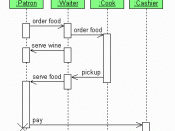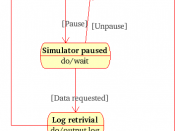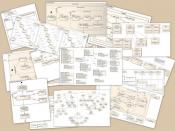Introduction
As the strategic value or requirement of software increases for many companies, the industry looks for techniques to automate the production of software, to improve quality and reduce cost and time-to-market. Businesses seek techniques to manage the complexity of systems as they increase in scope and scale. The Unified Modeling Language (UML) was designed to respond to these needs. In this paper we will discuss why we use a UML, as well as a few types of UMLs such as Class Diagrams, Use Case Diagrams, and Activity Diagrams.
What is a UML?
To organize program code more efficiently, programmers often create "objects" that are sets of structured data within programs. Using UML, developers and architects can make a blueprint of a project; much like ERD diagrams are used for relational design. The relationships created in the diagram dictate how the database is built. Then Use Case diagrams are used to determine user interaction.
(i.e. User clicks on button, action X is invoked, output Y occurs.) The Use Case Model describes the proposed functionality of the new system. From this simple diagram the requirements of the ordering system can be easily derived. The developed system will need to be able to perform actions for all of the use cases listed. As the project progresses other use cases might appear. For example, a customer might have a need to add an additional item to an order that has already been placed. This diagram is easily expanded until a complete description of the system is derived capturing all of the requirements that the system will need to perform.
UML is the result of the unification of three major object-oriented modeling systems: Booch, OMT (Object Modeling Technique) and OOSE (Object-Oriented Software Engineering). Adopted in November 1997 by the Object Management Group...


